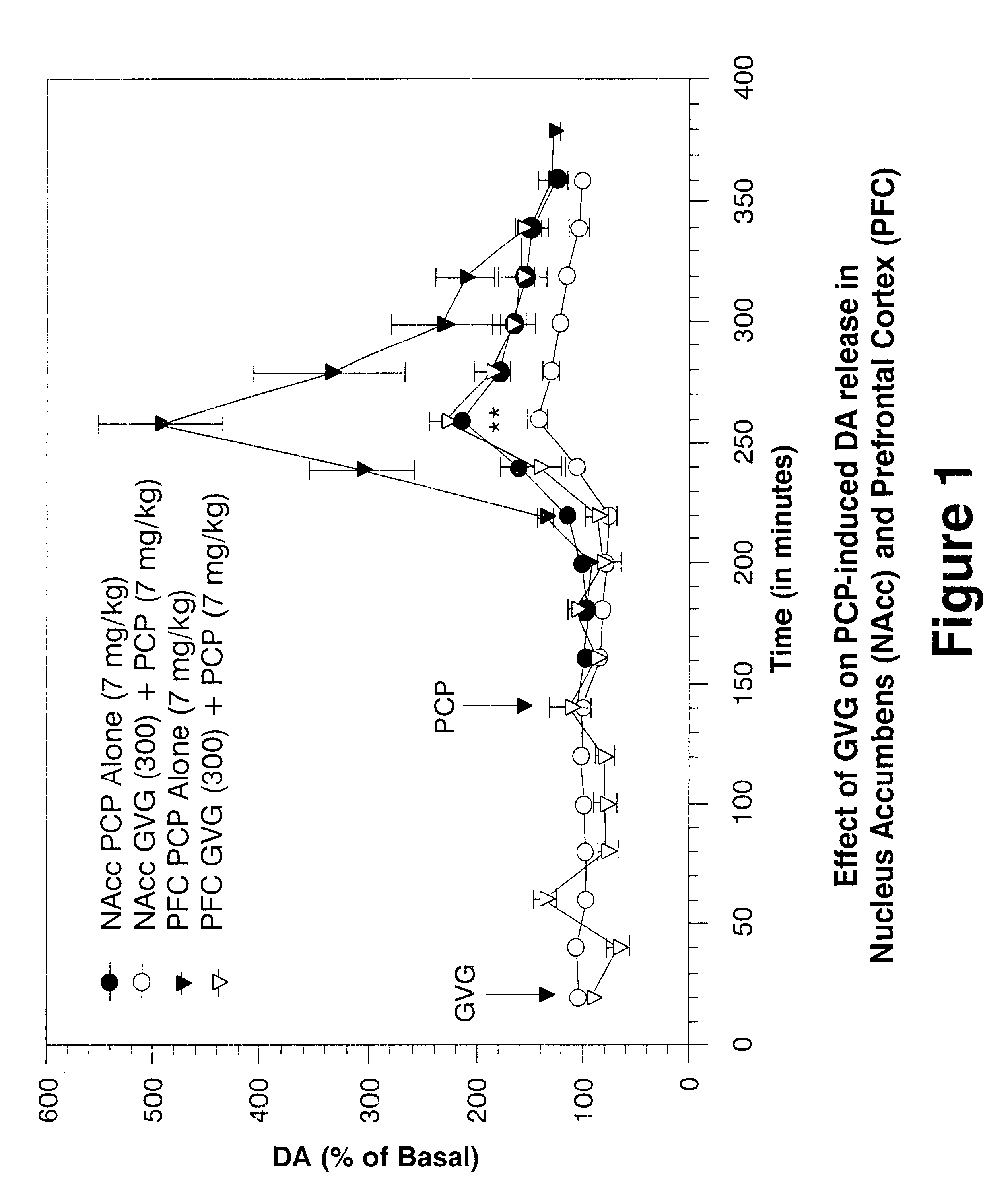Treatment of PCP addiction and PCP addiction-related behavior
- Summary
- Abstract
- Description
- Claims
- Application Information
AI Technical Summary
Benefits of technology
Problems solved by technology
Method used
Image
Examples
example 2
Studies using 11C-raclopride, GVG, and PCP were performed in primates in an effort designed to extend these findings from changes in extracellular DA concentration (in vivo microdialysis) to changes in synaptic concentrations measured by positron emission tomography (PET). PET studies were performed on four Papio anubis baboons. In all cases, prior intravenous administration of 300 mg / kg GVG prevented the diminution of .sup.11 C-ralcopride binding as a consequence of increases in synaptic dopamine following PCP administration (1 mg / kg). The results of this example show that GVG effectively attenuates the elevations in Nacc DA produced by a PCP challenge.
Thus, drugs that selectively target the GABAergic system can be beneficial for the treatment of PCP addiction. More specifically, GVG-induced GABA-T inhibition, which produces an increase in extracellular brain GABA levels, represents an effective drug and novel strategy for the treatment of PCP addiction.
While there have been descri...
PUM
| Property | Measurement | Unit |
|---|---|---|
| Mass | aaaaa | aaaaa |
| Mass | aaaaa | aaaaa |
| Mass | aaaaa | aaaaa |
Abstract
Description
Claims
Application Information
 Login to View More
Login to View More - R&D
- Intellectual Property
- Life Sciences
- Materials
- Tech Scout
- Unparalleled Data Quality
- Higher Quality Content
- 60% Fewer Hallucinations
Browse by: Latest US Patents, China's latest patents, Technical Efficacy Thesaurus, Application Domain, Technology Topic, Popular Technical Reports.
© 2025 PatSnap. All rights reserved.Legal|Privacy policy|Modern Slavery Act Transparency Statement|Sitemap|About US| Contact US: help@patsnap.com

